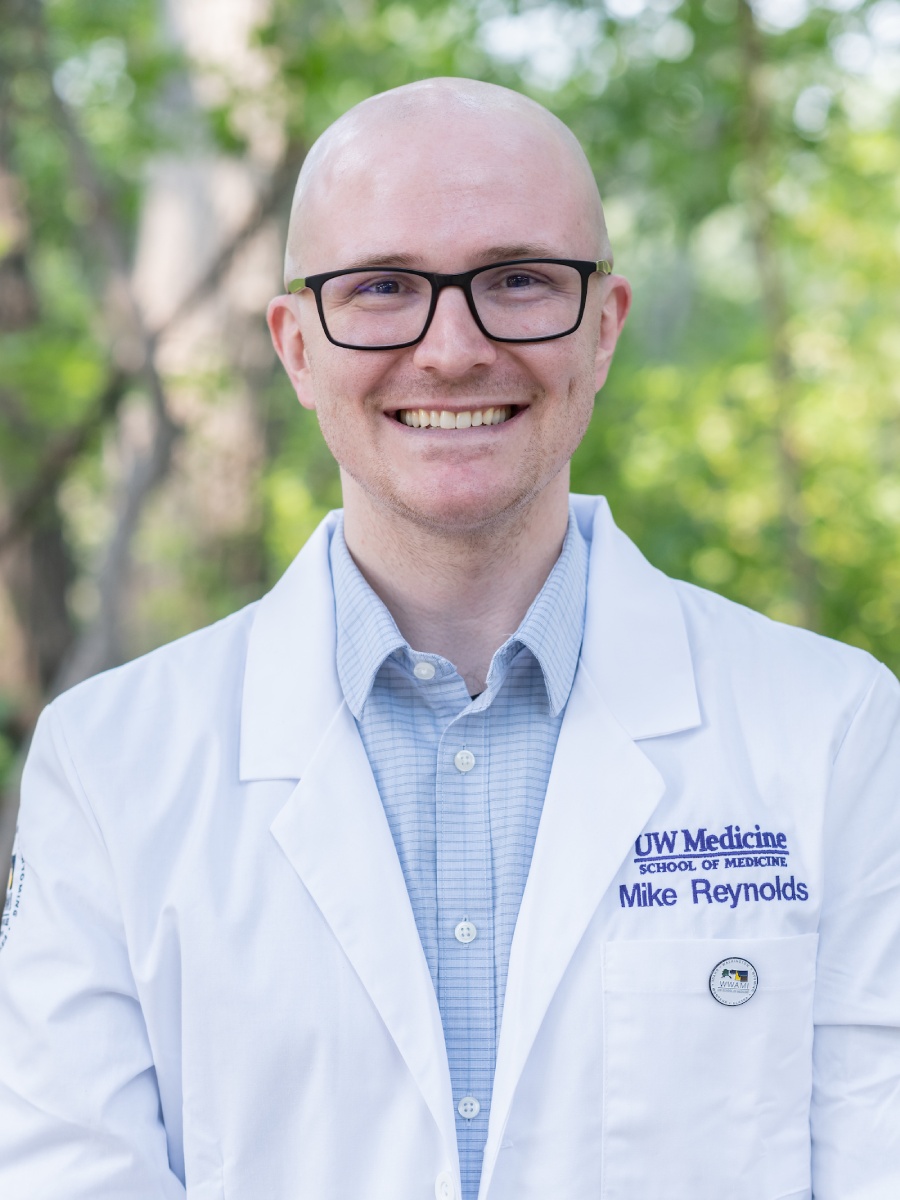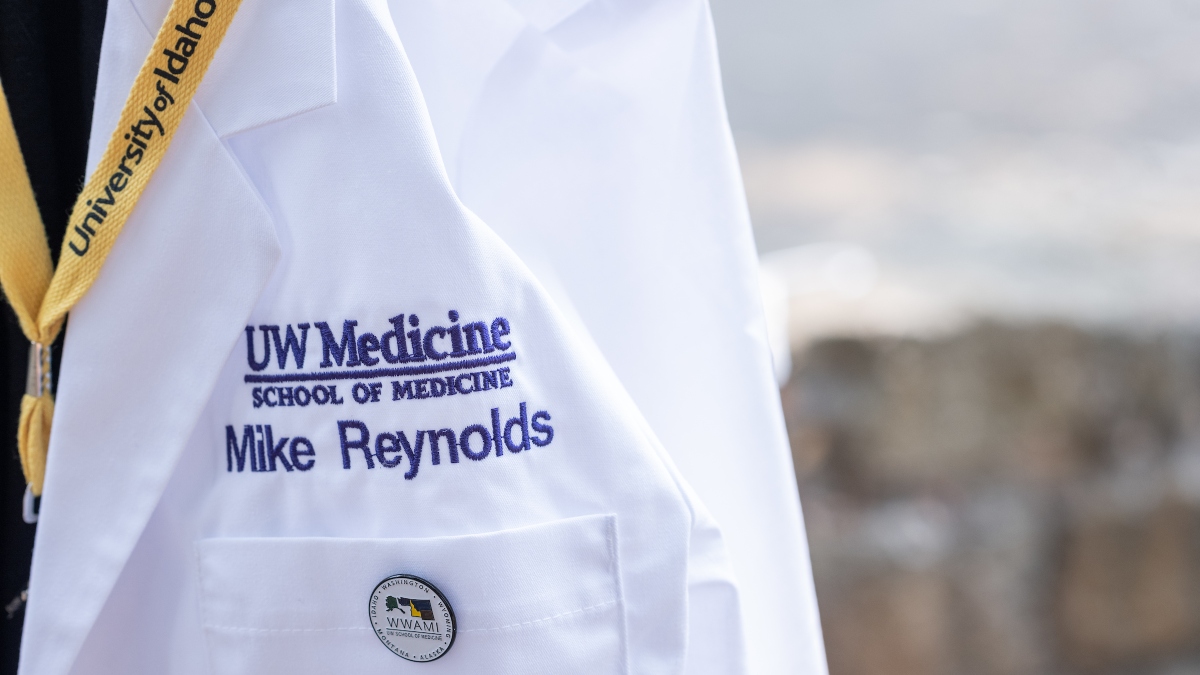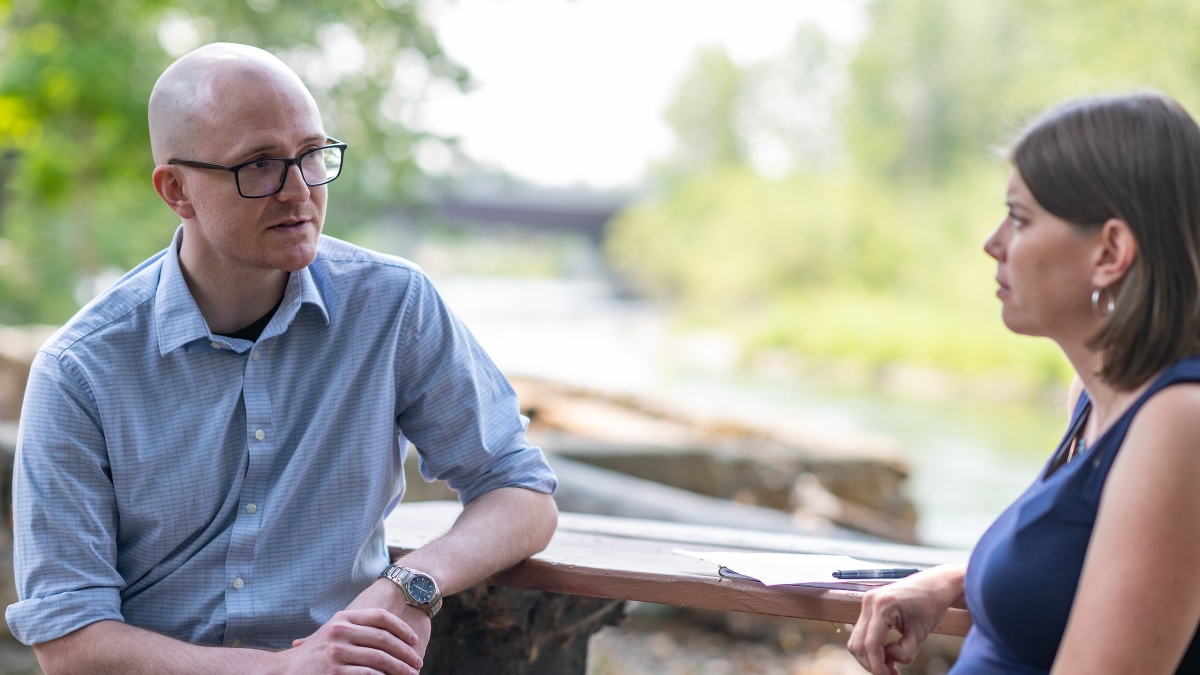Talking About Teenage Suicide
Idaho WWAMI Medical Student Coordinates QPR Training to Save Lives
Mike Reynolds is coordinating the QPR training program in the Jerome school system to help prevent child and adolescent suicide. Reynolds, who is pursuing a career as a child psychiatrist, believes that the "Question, Persuade, Refer" training program may be an effective way to get young patients to mental and behavioral health professionals.
WWAMI Student and St. Luke’s Provides Suicide Prevention Training to Jerome Schools
Roughly one in five teenagers consider suicide annually in the United States, according to the Centers for Disease Control and Prevention.
“That number, it should shock people. There are actions we can take to lessen that number though, and we start by talking about suicide,” said Mike Reynolds, a third-year medical student with Idaho WWAMI, the state's regional medical school operated through a partnership between University of Idaho and University of Washington School of Medicine.
As part of his medical training, Reynolds is introducing suicide prevention training to the Jerome School District. He wants to offer teachers and school officials — who may see students in trouble — the tools to prevent suicide amongst their students.
“Suicide is a difficult topic to discuss; it is one which we need to discuss urgently. The numbers are only getting worse, and there is much more to do,” Reynolds said. “We need to be on the lookout for those who are considering suicide and be able to intervene.”
If you need help, call the National Suicide Prevention Lifeline: 1-800-273-8255, or text “HOME” to 741741 to reach Crisis Text Line, a free, anonymous source for anyone experiencing a crisis.

Specializing in Child/Adolescent Psychiatry
As a senior at Eastern Oregon University in La Grande, Oregon, Reynolds helped lead a research project to assess the mental health of rural children. He spoke with key players in the region’s health care system, including parents, teachers, mental health specialists and other health professionals.
“The overarching theme was that they desperately needed a child and adolescent psychiatrist,” he said.
Idaho has five child psychiatrists for every 100,000 citizens, according to Idaho Behavioral Health Collaborative. Reynolds was already leaning toward becoming a social worker or psychologist, but the Oregon project pushed him to apply to medical school to be a child and adolescent psychiatrist in rural Idaho.
“It was just like boom — I've been exposed to this desperate need, which I find out is basically the need everywhere in rural America,” the Nampa native said. “I was like, OK, I need to do this, this is my calling. This is what I’m meant to do.”
"We need to be on the lookout for those who are considering suicide and able to intervene. " Mike Reynolds, Idaho WWAMI Medical Student
Reynolds completed his pre-requisite classes for medical school at Boise State University and worked for a year as a psychiatric technician for an in-patient elementary school in Nampa. After successfully applying to Idaho WWAMI, Reynolds will complete all four years of medical school in Idaho, with his first two in Moscow.


Adolescent Depression and Suicide
Reynolds is a Targeted Rural and Underserved Track scholar, or a TRUST scholar. TRUST scholars are linked to small city, underserved or rural communities in Idaho for a series of educational and clinical experiences throughout their four years of medical school.
“Our TRUST students are in these communities over a long enough period that they get that immersive experience and start to integrate into the community,” said Rayme Geidl, co-director of TRUST. “Our whole goal is we want Idaho students to come back and be Idaho doctors, and our students always come away from TRUST with really impactful experiences.”
Of the seven TRUST sites in Idaho, Reynolds moved to Jerome, a rural town in southern Idaho. There, he works under Catherine Doyle, MD, a WWAMI graduate who also participated in TRUST while in medical school.
To fulfill TRUST curriculum, Reynolds completed a community assessment of Jerome to identify a local healthcare need. Through interviews with community members and analyses by the local hospital, St. Luke’s, he saw an opportunity to address child and adolescent suicide, a concern that he has personal experience with as a Crisis Text Line counselor.
"Our whole goal is we want Idaho students to come back and be Idaho doctors." Rayme Geidl, co-director of TRUST
Suicide is a critical public health issue in the Gem State, according to the Idaho Department of Health and Welfare. In 2018, Idaho had the fifth-highest rate of suicide among states. Jerome has a 10% higher suicide rate than the rest of Idaho, Reynolds said, citing numbers from the St. Luke’s Community Health Assessment.
“This trend isn’t limited by where you live or what ethnic or religious background you are. It’s affecting everyone,” Reynolds said. “And it’s affecting younger and younger people. Through my work in Jerome, I’ve had elementary school principals admit that suicide prevention training is something they could use.”
Suicide among adolescents is a growing health concern, as it is the second-leading cause of death for people ages 14 to 18, according to the CDC. The COVID-19 pandemic has not helped. A recent CDC study of children 12-17 documented an increase in suspected suicide attempt emergency department visits starting in May 2020, especially for girls which rose by more than 50% from early 2019 to early 2021.


Question. Persuade. Refer.
To address the rising number of suicides, Reynolds is looking toward classrooms — at least to teachers — for help. Teachers are often on the frontlines when it comes to adolescent mental health but may not have the skillset to address concerning behaviors.
The QPR Institute, a nonprofit organization that focuses on suicide prevention, has devised a three-step program to help trainees identify the signs of crisis and learn techniques for talking with people displaying suicidal behaviors. Likened to CPR for behavioral health, QPR — Question, Persuade, Refer — asks trainees to stabilize individuals until they can get treated by a professional.
“It is a very confusing, fast time for middle school kids,” said Nicole Ferreira, the principal at Jerome Middle School. “I want the best for my students and staff, and this training adds a tool to their tool kit to make Jerome Middle School the best place to work and go to school.”
While working at his clinical TRUST site, Reynolds learned that St. Luke’s had purchased QPR training licenses, and he wanted to place some of those licenses with teachers and school officials in the Jerome School District where they could help young students. He worked with the local Community Schools Partnership, a United Way of South Central Idaho organization, and helped shepherd the setup of the QPR trainings in Jerome schools. St. Luke’s has local QPR trainers who will be providing the trainings.
“Our teachers might get a little bit of training in teacher education programs but not enough really,” said Pat Charlton, Jerome School District superintendent. “These QPR trainings can give the teachers the confidence they need to talk to a student about their state of mind and then do a referral for counselors, social workers and school psychologists.”
"These QPR trainings can give the teachers the confidence they need to talk to a student about their state of mind." Pat Charlton, superintendent of Jerome School District
Reynolds said one of the biggest worries QPR should help the teachers overcome is talking with students exhibiting worrying behavior.
“A lot of people believe that if you talk to someone about suicide that you’ll plant the idea,” he said. “That’s not the case. Someone who is considering suicide is more than willing to talk about it.”
Reynolds hopes to train at least one person at every school location and help people start discussing the problem.
“Suicide is one of those things that’s just lurking under the surface of not only society but also in individual people. It’s hard to see the wounds,” Reynolds said. “Even if only one student is helped by a QPR trained teacher, for me that will make this all worth it.”
Writer Attribution: Article by Leigh Cooper, University Marketing and Communications.
Photo Attribution: Photos by Melissa Hartley, University Photo Services.
Video Attribution: Video by Will Knecht and Kara Billington, University Video Services; Lindsay Lodis, Idaho WWAMI.
Published Date: Published in September 2021.













